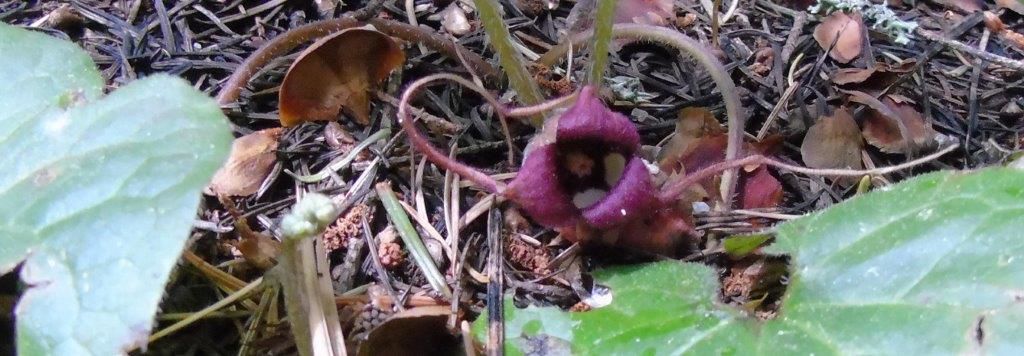The natural world, on the other hand, pushes on in its cycle of life to maintain its territories, feed their young, evade predators and feed themselves while surviving weather, crossing roads and habitat loss — all guided by the ability to smell and understand what those chemical queues mean for their safety and survival.
Wild plants, wildlife and insects all live in a world where communication is essential to survival and a long life.
These scents send vital messages to those that can interpret their meaning and act on these messages.
The whole purpose of survival in the natural world is to pass your genes on, to the next generations.
Some amazing animals that are masters at survival right here in Walla Walla County by receiving and interpreting messages are the two wild, wonderful species in this month’s column.
The ability to pick up odors through your nose, or by other olfactory functions like taste, are so very important in choosing places to feed, items to feed on or places to enter.
One family of wild mammals that inhabits this county are the mustelids, better known to most folks as the weasels. These are a group of very active predator/omnivores that seldom sit still and are always on the lookout for opportunities to come into unexpected prey or feeding chances.
This is a family almost totally guided or directed by their nose. This organ is highly sensitive among this clan of master predators.
Scent receptors in their nose alert these colorful muscular mammals to prey species.
One specific weasel species that everyone is aware of and even may have had a personal experience with is the striped skunk.
This weasel family member has honed chemical scents to a science and an outstanding defensive strategy. These omnivores pack the original predator/mammal repellant in the form of an oil-based musk that uses fat lipids as a sticker to carry a most-repulsive message to any other animal that the skunk dose not wish to be bothered.
The skunks’ black-and-white pelt colors are a major warning sign to start with, and if the animal ignores that color pattern, it has placed itself for a lesson in personal space.
Skunks are not gregarious creatures by nature, and as they are always looking for food or females at certain times of the year, they wish to be left alone to search out insects, reptiles, mice and ripe fallen fruits.
There are four skunk species in the Western states, but only two are found in this region: the big striped skunk; and the smaller spotted skunk, which is rare and hard to find.
The scent of a skunk’s spray is hard to forget once encountered by man or beast alike.
There is one skunk-hunting predator that ignores this powerful chemical defense and often catches and eats fresh skunk, scent and all.
This is the Great Horned owl.
These big, powerful birds of prey have no olfactory sensitivities and just think of black-and-white skunks as much easier to find and catch.
So, remember that weasels all have scent glands that they use to leave and send messages wherever they live.
Other weasel species that live in Walla Walla County are the American river otter, mink, American badger, spotted skunk and long-tailed weasel.
Because odors are very important messages that are sent and received by many different plants and animals, the air is always full of all kinds of smells that animals and plants with specific receptors pick up on.
These messages are often about food, living or dead species, territories, water or blooming plants to entice pollinators.
Many animals can pick up and follow odors with only two to three parts per million from all kinds of sources.
High in eastern Walla Walla County is a late spring and summer blooming wild native plant that is truly unique due to the message that its blooms send out.
This ground-hugging, beautiful heart-leafed plant produces a bloom unlike any other in the northern Blue Mountains above 3,600 feet. I am speaking of the wild ginger that grows only under an 85 percent canopy in rich, moist soils, and seems to be in patches where perfect conditions promote its growth.
Mature wild gingers produce a three-petaled flower that lays flush with the ground, mostly under the gingers’ heart-shaped dark green leaves. Each petal has a long tapering, thin-curled point off each of its dark purple petals. The throat of this flower is a golden yellow as it faces out across the floor of the forest.
If the shape, color and odd formation of this flower were not enough, there is this flowers’ scent it sends out. Instead of smelling like a wonderful mock-orange blossom, or a spectacular gardenia, this amazing blossom sends a message that there is a dead rodent or winter-killed small bird down under the ginger’s leaves.
The animals that instantly pick up on this message are several species of carrion flies which then follow up the trail of scent molecules right to the wild ginger’s fraudulent flower.
Assuming that the message sent is true, these hair-covered flies land on and enter the flower to lay their eggs on the carcass they smell.
These insects wander around inside the flower looking for the carcass, and in doing so they pick-up the pollen within the flower as it sticks to the many hairs on their bodies.
Finding no carcass, these flies come and go and, in doing so, they pollinate the wild ginger flower hidden in its dark, moist forest site.
Nothing in nature ever happens, or are scents ever released, for no reason.
So, when scents and odors are detected in the air, know that it is a message and the thing to ask is, can you interpret it correctly?
Remember, life is good!
Source: Nature send scent-filled messages | Diversions | union-bulletin.com













